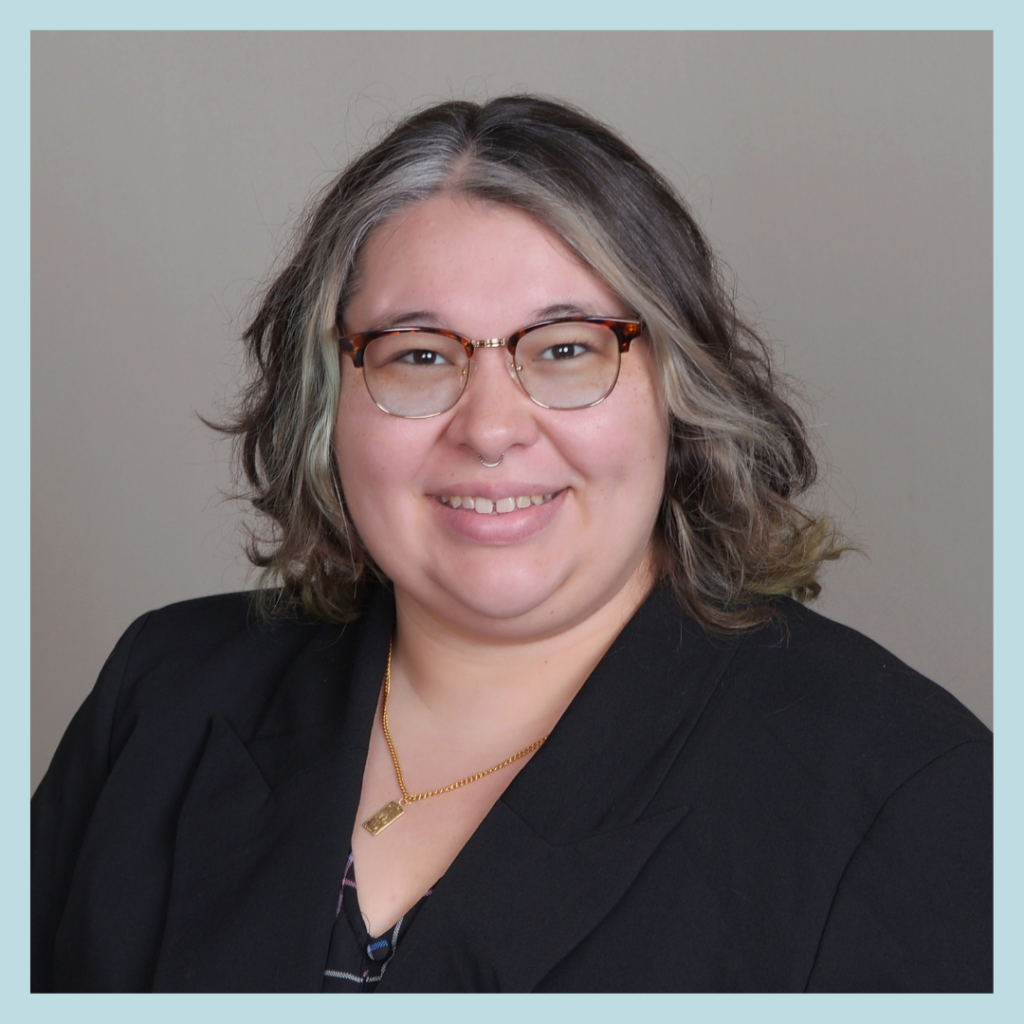#UMNMCH student Katie (she/they, MPH 2024) describes her deployment at the LGBTQ Center Orange County, a nonprofit community organization that provides programming, outreach, and resources to the LGBTQ+ community. They exist so that every segment of the LGBTQ+ population of Orange County has the resources needed to thrive in their own lives and communities. As a part of her deployment, she created a community needs assessment framework, public health training materials for volunteers, and a social media outreach campaign. Through their work, they were able to make a local impact on the health of their community and hope to positively contribute to the lives LGBTQ+ community members in Orange County.
What brought you to the MCH Program?
When searching for the right MPH program, I knew I needed flexibility as a full-time healthcare worker. The University of Minnesota’s Maternal and Child Health program is one of the few fully online Master of Public Health programs in the country with a focus on MCH. I was particularly drawn to the sexual health minor offered at UMN, which is what drove me to apply.
What were the goals of your deployment? What did you work on or address?
As the MPH intern, I started the framework of the LGBTQ Center OC’s community needs assessment for tobacco programming tailored to LGBTQ+ youth in public middle and high schools in Orange County. LGBTQ+ youth use tobacco at disproportionate rates compared to their cisgender, heterosexual peers (McCarl Dutra et al., 2023). Further disproportionate rates of tobacco use exist among youth impacted by multiple marginalized group membership (Donaldson et al., 2023). I utilized the National Commission for Health Education Credentialing (NCHEC)’s Health Education Specialist’s Companion Guide for guidance on developing a community needs assessment. I also assisted with developing cultural competency presentations for healthcare providers of LGBTQ+ patients and designed an introductory Public Health 101 presentation for onboarding volunteers.
What was accomplished or produced during your deployment?
I created three products for this internship: a Community Health Needs Assessment Recommendations report, a Public Health 101 presentation, and a series of social media posts about social determinants of health and how they may impact the LGBTQ+ community. My products are intended for a variety of audiences, including leadership staff and program managers, volunteers who are joining the Center’s team, and community members hoping to learn more about LGBTQ+ public health issues.
How will (or do you hope) your deployment efforts/findings will be used in the future?
The report I wrote provides a framework for the LGBTQ Center OC to perform a comprehensive needs assessment to best serve LGBTQ+ youth. It provides data showing local trends in LGBTQ+ youth tobacco use, advises best practices for tobacco programming, and gives recommendations for launching a full needs assessment to serve this population. I hope the background research and information I have compiled will make the community needs assessment process easier and smoother for the Center.
What was the best thing about your deployment?
The best part of my deployment was being able to use what I learned at UMN to make a real-world impact on my local community. Being able to collaborate with an organization that is a local powerhouse of advocacy and positive change for the LGBTQ+ community makes me feel like I am making a difference. I am honored and proud to be contributing towards improving the health outcomes of my local LGBTQ+ community.
REFERENCES
Donaldson, C. D., Stupplebeen, D. A., Wilkinson, M. L., Zhang, X., & Williams, R. J. (2023, May). Intersectional Disparities in Youth Tobacco Use by Sexual and/or Gender Minority Status and Race and/or Ethnicity. Nicotine and Tobacco Research, 25(5), 898-907. https://academic.oup.com/ntr/article-abstract/25/5/898/6832111?redirectedFrom=fulltext&login=true
McCarl Dutra, L., Ingold-Smith, M., Rotermund, S., Clodfelter, R., & Levine, B. (2023, March 1). Results of the 2022 California Youth Tobacco Survey. CDPH. Retrieved July 6, 2024, from https://www.cdph.ca.gov/Programs/CCDPHP/DCDIC/CTCB/CDPH%20Document%20Library/ResearchandEvaluation/FactsandFigures/CYTS2022AnnualReportFinal.pdf
BIO
Katie Quijada is a second-year MCH MPH student. Her background is in community health education, harm reduction, and adolescent sexual health. Katie received their BS in Health Science with an emphasis in Community Health Education from California State University, Sacramento. She is currently a Substance Use Navigator for University of California, Irvine, where she supports patients who use drugs by helping navigate their access to community resources. In their spare time, they enjoy gardening, spending time with her partner and pets, people-watching at coffee shops, and reading. After graduating, Katie aims to continue to make positive public health impacts in Orange County by destigmatizing drug use and increasing access to healthcare for underserved populations.
–Read Student Spotlight archives
Interested in learning more about getting a degree in MCH? Visit our MCH Program page for more information.
#UMNMCH #UMNproud #UMNdriven
